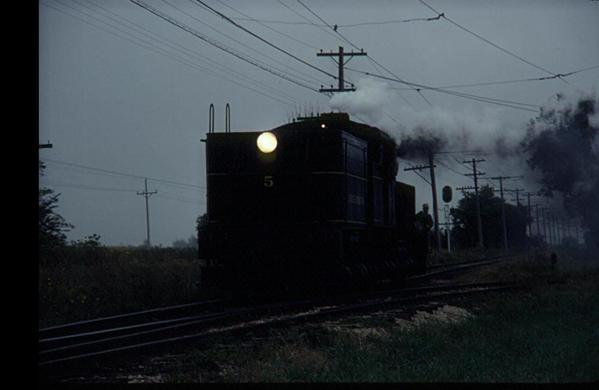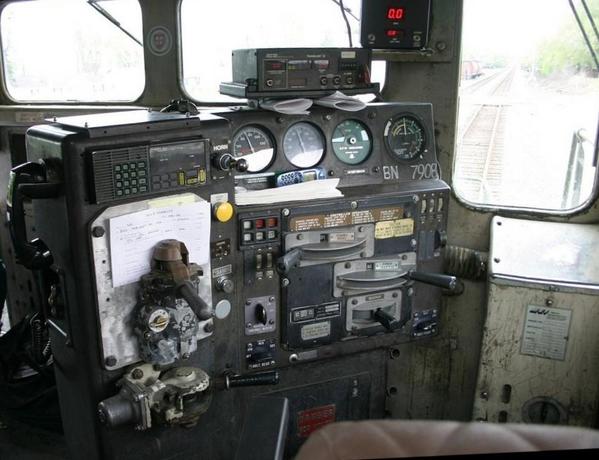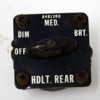This is just one of the compromises of 3-rail remote control systems. Right now there are hundreds of O gauge steam locomotives and diesel units running forward with the headlight, green class lights to the front and red markers to the rear, illuminated on the steam locomotive or on the leading unit. And, if we make a reverse movement, the rear headlight is illuminated, regardless of whether the movement is light or with cars, steam, diesel, or electric. That's just how it is.
In real life, the Engineer manually controls the rear headlight,* and uses it:
- dim on both ends of light engines within yards or when standing on a main track
- bright when running backward on a main track, either as a light engine movement or when pulling cars attached to the front of the locomotive, dimming it when required by rules.
- off on the end(s) coupled to cars, or on light engines when stopped in a siding and all siding switches have been lined for main track movements
- since the question was about rear headlights on steam locomotives, we will disregard the contemporary use of a dim headlight displayed to the rear of a locomotive attached to the rear of a train, as a marker. This is a modern compromise and was never the practice in steam days.
Personally, I would like to be able to individually control headlights on both ends (bright, dim, off) number lights, Mars lights, and class lights (on, off, green, white, red for markers). Most modelers would want to throw the remote against the wall if they had to constantly make adjustments like those. Model railroading is done for enjoyment, so, we have what we have, and, I just overlook some of these little things. Some who are more passionate, disable the marker lights on the tender, or the permanently green class lights. This is usually done by cutting wires.
I find that a the automatic rear headlight on my 3-rail locomotives indicates whether the latest direction command I sent has been received, and keeps me from starting off in the wrong direction.
So . . . no there were never, and still aren't, any automatic rear headlights on locomotives, but let's have fun running our trains.
* The proper name of this appliance.










